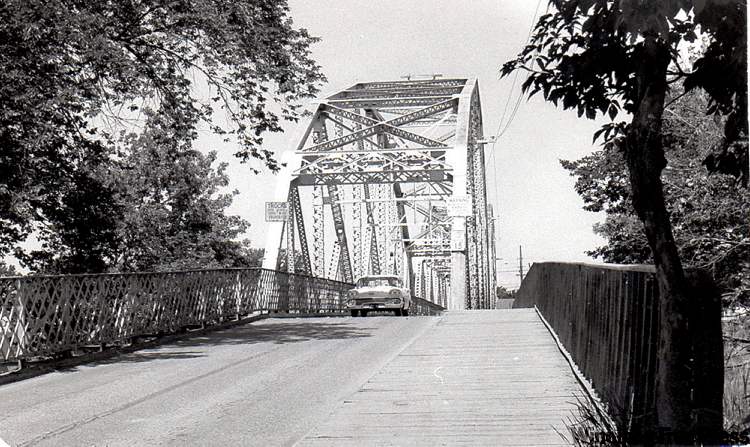Bridge wasn’t always an ice-cream stroll
What the Winnipeg? Decoding our city
Advertisement
Read this article for free:
or
Already have an account? Log in here »
To continue reading, please subscribe:
Monthly Digital Subscription
$0 for the first 4 weeks*
- Enjoy unlimited reading on winnipegfreepress.com
- Read the E-Edition, our digital replica newspaper
- Access News Break, our award-winning app
- Play interactive puzzles
*No charge for 4 weeks then price increases to the regular rate of $19.00 plus GST every four weeks. Offer available to new and qualified returning subscribers only. Cancel any time.
Monthly Digital Subscription
$4.75/week*
- Enjoy unlimited reading on winnipegfreepress.com
- Read the E-Edition, our digital replica newspaper
- Access News Break, our award-winning app
- Play interactive puzzles
*Billed as $19 plus GST every four weeks. Cancel any time.
To continue reading, please subscribe:
Add Free Press access to your Brandon Sun subscription for only an additional
$1 for the first 4 weeks*
*Your next subscription payment will increase by $1.00 and you will be charged $16.99 plus GST for four weeks. After four weeks, your payment will increase to $23.99 plus GST every four weeks.
Read unlimited articles for free today:
or
Already have an account? Log in here »
Hey there, time traveller!
This article was published 08/07/2010 (5625 days ago), so information in it may no longer be current.
It’s best known as The Ice Cream Bridge or the BDI Bridge, and the bulk of its traffic is busy licking and slurping ice cream delicacies from the Bridge Drive-In.
If you’ve ever had to dodge the odd cyclist or a pedestrian with their face buried a Goog Special on what is officially known as the Elm Park Bridge, you’ve probably wondered, "How on Earth did cars ever get across this thing?"
Did they have to go one at a time? Was it one-way only? Did they have to ride up the railing to keep from crashing? After all, when the bridge was closed to vehicle traffic for the last time in 1974, gas-guzzling autos ruled the road and two-person smart cars weren’t even a figment of some automaker’s imagination.

Brad Neirinck, bridge engineer for the City of Winnipeg, said as incongruous as it might seem, the 16-foot-wide bridge carried two-way traffic.
"Most vehicles are about eight feet wide, so it was probably just wide enough for two cars to pass, but you’d probably take each other’s mirrors off as you were passing each other."
During some repairs in the early 1970s, the speed limit was reduced to eight miles per hour. A sidewalk that used to be on the east side of the bridge was taken down many years ago too.
Built by the Elm Park Bridge Co. in 1912 at a cost of $125,000, the bridge’s original purpose was to spearhead the development of Kingston Crescent and Kingston Row by allowing easy access from Jubilee Avenue. To pay what cost a small fortune at the time, developers built a toll house and collected fees from everybody who wasn’t a local resident. (The fee was five cents for pedestrians, a dime for cars and 25 cents for trucks.) Tolls were collected until 1946.
It wasn’t the first bridge built there, however. Back in 1891, a pontoon bridge was christened in conjunction with the opening of Elm Park and the River Park Amusement Centres. The area became a popular picnic site and campground for people who didn’t have the time or money to buy a cottage on Lake Winnipeg. From the 1890s to the 1930s, River Park had a dance hall, a roller-skating rink, a small zoo, a merry-go-round, a large roller-coaster ride and a toboggan sliding complex in the winter.
Facing extensive renovation costs for the bridge in the mid-1990s, the city investigated the possibility of tearing it down but backed away when told of the $1-million price tag. Neirinck said the tops of the concrete piers were fixed this spring at a cost of $300,000 and the bridge will be here… well, forever.
"With today’s push for active transportation, that bridge provides a good connection for cycling routes. I don’t anticipate we would be taking it down," he said.
The prime beneficiary of the Elm Park Bridge is, without a doubt, the BDI. In fact, manager Roger Brisebois said it’s the main attraction.
"It’s huge. You get your ice cream and you walk across the bridge and toot around Kingston Crescent. Seventy-five per cent of our customers either do that or just eat their ice cream on the bridge. It’s a big, big part of the BDI," he said.
geoff.kirbyson@freepress.mb.ca

